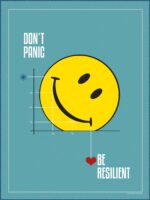AT THE HEART OF IT – EPISODE 5
ROHINI NILEKANI AND MELINDA FRENCH GATES
Funding Hope and Wellbeing
In this insightful conversation, Rohini Nilekani, Chairperson of Rohini Nilekani Philanthropies, engages in a heartfelt conversation with Melinda French Gates, Founder of Pivotal Ventures, about the power of wellbeing to inspire welldoing. As part of The Wellbeing Project’s new series, “Cultivating Hope”, Rohini and Melinda discuss the critical role of philanthropy in supporting the wellbeing of social changemakers.
Building on Rohini’s keynote address at the first regional Hearth Summit in India, they highlight how funding wellbeing initiatives can lead to sustainable impact in the social sector. By sharing their own personal wellbeing practices, they offer invaluable insights into the importance of nurturing both inner and outer work. Let’s get to the heart of it.
Let's dive right in! Let's dive right in!
LISTEN TO EPISODE 5
And find us on Spotify | Apple Podcasts | YouTube | Amazon Music
Resources Resources
From This Episode
Full episode transcript Full episode transcript
Welcome to At The Heart Of It, a podcast where we explore issues at the heart of our world’s biggest challenges and their solutions. We’re on a journey inward going into ourselves, reflecting on who we are, listening to humanity’s collective story. Our guides are the visionary leaders, activists, scholars, and practitioners who are changing the world and whose own inner journeys of wellbeing inspire their welldoing.
You may know that at The Wellbeing Project, we believe wellbeing inspires welldoing. This means that when social changeamkers’ wellbeing is cared for, their power to make the world a better place is even stronger. But sometimes changemakers have limited access to wellbeing resources, and this funding gap is holding back progress both now and for future generations.
To make a difference, philanthropy and funding organizations can play a key role in making wellbeing more accessible to the people who need it now more than ever. For today’s episode, we bring you a profound conversation from our new video series, Cultivating Hope, where leading philanthropists share how funding wellbeing is a key way to cultivate hope and sustainable impact in the social change sector.
Our special guest host is Rohini Nilekani, Chairperson of Rohini Nilekani Philanthropies, who sits down with her friend and fellow philanthropist, Melinda French Gates, founder of Pivotal Ventures, for an intimate conversation on their own wellbeing journeys, why it’s important to fund changemakers’ wellbeing, and the role philanthropy plays in driving transformative positive progress.
Let’s get to the heart of it.
Rohini Nilekani (RN): Hi, Melinda. It’s so good to see you.
Melinda French Gates (MFG): Hi, Rohini. I’m so glad we could do this.
RN: Yeah, I’m so glad The Wellbeing Project asked us to be in this, what I think is an important conversation that should ring around the world. And with you there, I hope that will happen.
MFG: Okay, good.
RN: You know, I’m going to kick it off, Melinda. We’re going to talk a little more about the wellbeing of the social sector, which is what The Wellbeing Project is mostly involved with. But I want to ask you about your own journey, and I’m happy to share mine later. But how do you see the journey of your own wellbeing? I mean, it keeps changing across our lives, but anything you’d like to share about what you do, or how important you think it is and any words to share with us?
MFG: Yeah, I think wellbeing is fundamental in terms of me doing the work that I try and do in the world. And for me, it’s when I’m sort of at my best, I think when I can align my heart, my spirit and my mind. And for me, I’ve had to develop over the last, I would say 25 years, a kind of a set of practices that helped me do that. I’d love to hear some of yours, but I’ll tell you a few of mine, which is I try in the morning, every morning to do just a little bit of yoga and then I sit and I either read something spiritual and journal or meditate on that, or I just meditate. Every day I try to get some exercise. The realistic part of that is probably five days a week. It’s harder when I’m traveling and on the road. Then kind of across the course of the month or the year, I both have a group of friends, female friends, that I try to walk with every Monday morning when we’re in town. And then I’m in two different non-denominational spiritual groups. One is about eight women. It’s been going on for over 20 years. One is started right before COVID and it’s six women. And again, we do readings and then we talk about what is alive for us or what we’re working on in terms of our spirit. So those are some of my practices. I’m curious, what are some of yours?
RN: Yeah, you are very disciplined, Melinda. I know that about you and you work really hard at things. So, yes, wellbeing. Obviously it’s critical. I find that my needs and practices have changed over the decades. And now that I’m in my 60s, I feel like I need something different. So my first way of being well is to be with my grandson, but everybody should be so lucky to have a grandchild next to them. But apart from that, as soon as I can, I get out into nature. So, like you, when I wake up, I do some breathing exercises or some prayer or something like that to settle me before I get out of bed. But then my first thought is to go out on the balcony and listen to the birds because I’m a big birder. So the first thing I want to know is there some other bird calling? Who’s calling? Are my friends here out there in the sky on the trees? So that really helps to center me a lot. I love music. I like yoga like you. We like walking. We try to do exercise as much as we can. And we try to be disciplined at any rate. But I think of all the things I like what you said about having a circle of friends. I think women perhaps find it easier to have that circle of friends to whom you can make emotional contact and tell them what you’re feeling and hear from them too. But that’s been hugely important. And I think having them on a WhatsApp group has also helped, especially since the pandemic. So yeah, working on wellbeing seems to be critical.
MFG: You know, there’s a great teacher who says that unless the inner work is large, the outer work can’t be large, right? If the inner work is small, the outer work stays small too.
RN: I’m sure you’re familiar with this, but I had some statistics. The Wellbeing Project has been doing a lot of surveys among changemakers, 300 plus in 55 countries. And 75 percent of them said, yes, wellbeing was important, but only 25 percent felt able to do something about it. And that burnout, stress, anxiety, trauma seems to be part of the journey of changemakers. Because you and I are at least one degree or two degrees removed. People on the front lines dealing in war-like situations, in extreme poverty, disease. We are hearing that their substance abuse, anxiety, mental health issues are much higher than in any other sector. So which is why I think we need to think together. How are all of us who are in the donor community, in the social sector community, able to make a difference? How do you think, Melinda, we could work together, all of us, to do a little more to bring this issue more into the mainstream? It is more in the mainstream than it used to be, but any of your thoughts as to how we can highlight it more? So that even how philanthropy is done can change a little to support the social sector better. Do you think philanthropy is ready or we need to nudge it a bit? Or when will we, do you think we are more ready post-COVID?
MFG: What you’re doing here with The Wellbeing Project is bringing it to light, and then yes, absolutely, philanthropy can keep some space to say, okay, we know this takes a little bit more overhead, but then what we see is that, like, a social worker will stay in their job longer, and there’s, there’s a huge benefit to that longevity. We can use our voice in the philanthropy sector, I think, to bring wellbeing up and to highlight it. And we’re hearing it discussed more and more around. The world at what I am seeing, particularly after COVID, is that the changemakers who were out there trying to help in the caregiving space or the teachers on the front lines or the nurses or the community health workers, they are just overwhelmed. I mean, they’ve helped to deal with that in their own family lives, let’s say COVID, and they’ve seen a lot of death in the community or near death, and they see traumatized families. So what they are experiencing is just enormous and it’s cumulative over time, right? So in one of the projects that I’ve worked on here at Pivotal Ventures, one of the things we made sure to do is one of the partners that we’re working with called the Highland Project. They’re trying to help women of color create financial intergenerational wealth But what we’ve realized with that partner and what they realize is they first had to take care of the wellbeing of their own staff. And so their own staff had to learn practices to take care of their own wellbeing, their own mental health, and their own financial wellbeing, so that then they could be out in the community, helping people on the ground have this intergenerational wealth. But you’re now having employers also say, wait a minute, if my employees aren’t well, or let’s say they’re dealing with an ageing parent who’s dying at home, they just can’t show up at work the same way. So how do we give them more wellbeing days or personal days off? And so I do think having this conversation, you know, helps us all recognize in society literally what we’re going through.
RN: Yeah, I’m so glad you mentioned the corporate sector as well, because definitely employee wellbeing and mental health are important key concerns that have come up, especially after covid. But do you think I can see how the corporate sector? Yes, they want to employ productivity. They obviously want their employees to be their fittest possible, happiest possible selves. Do you think philanthropy is ready? And how do we help make it more ready to say, yes, we talk about overheads or we talk about unrestricted funding, how can we keep a portion of that so that every organization we all support has a little space to create more wellbeing practices or whatever it needs? Maybe develop some processes, all of which take some resources so that they are also at their best to do what they want to do, which is help make social change.
MFG: I will be honest. I don’t see the philanthropy sector doing it at large yet but the conversation has started. There are more conferences about wellbeing. I mean, how are you seeing it play out in India?
RN: I think we are new at this. Even putting it on the table that it is such, we know that our frontline workers are under extreme stress, whether they’re in the social sector or government, medical workers, health workers, the ASHA workers, et cetera, it’s an extremely stressful situation. And I think sometimes while government has some good practices, I think it’s up to the philanthropy sector in India to now help start to develop some more tools to help those who have to face this. You know, come head-to-head with human distress every day and yet be detached enough to continue working. So I think there’s a lot of space from my philanthropy side, Melinda. One thing is I’ve begun very recently a new portfolio on mental health. I’ve put in about 13 million so far to two big national institutions that are working on five very prevalent mental health issues like schizophrenia, addiction, bipolar, etc. So, there’s long-term research going on there, which is very critical so that we can develop new, I hope, innovative therapies, or I don’t know what’s in store with that. But we’re also doing other grants in the sector which is important because it’s a huge issue in India. We’re also trying to understand what donor practices, just like you said, what are the best practices that help support our partner organizations to be at their most effective self. So we try at least to lead with trust and we try to give organizations space to change their practices or change based on what’s happening on the ground so that they’re not really locked into very hard defined ways of doing things. And we try to do some deep listening whenever we can. So I’m sure it’s the same with you. And I think that allows organizations a little more freedom and flexibility and takes the stress off of them. I must say sometimes donors can cause a lot of stress to partner organizations. So if donors were to say that we won’t be a source of stress at any rate, maybe it gives more space for peopl, especially leaders. You know, Melinda, I’ll keep this brief. We did a recent portfolio meet. And the leaders of these organizations were talking about how difficult it has become for them as leaders to constantly lead with confidence and without themselves scrambling under the increasingly complex issues, especially with climate and other things that we are facing now, climate anxiety is huge. I found among young people and young leaders. Any thoughts on that?
MFG: Well, I would say the other thing that you haven’t mentioned just as a general thing that we can do as philanthropists. One of the things I’ve worked on with Pivotal Ventures is about six years ago, I decided I really wanted to look more at the adolescent mental health space because the numbers were not good in the United States. And one of the things we realized is that there was not a good body of knowledge about what was truly going on with adolescents and particularly around their digital usage, right? Because they get all these messages about climate change, about institutions not working for them, and they get all these messages from their friends that aren’t good. And so one of the things that we’ve done is added to the body of knowledge by creating a Center for Digital Thriving at Harvard, and what they’re doing is really surveying and talking to adolescents about where is social media helpful to you and where is it hurtful? We’ve had some pretty surprising results. For instance, adolescents are saying that it’s really hard for them because at night, if one of their friends, let’s say, is having suicidal ideation or feels like they’re on the brink, they feel like they need to stay awake and support them. So one of the things we’ve learned is then how do we give parents tools to support their own adolescents? And everybody can use that in the field, right? Whether you’re a philanthropist, whether you’re a changemaker on the front lines, you can say, I’m also supporting my adolescent son or daughter. Here’s what I know about helping them survive or thrive, actually digitally. So we’re doing that. That’s one space we work in. And another you can work in, which we’re doing again with Pivotal Ventures is really looking at the caregiving that’s going on. It’s going on in every country. Women carry the disparate burden of that, but really highlighting that issue and bringing the research forward to show. What is the double-edged sword that women face supporting elderly parents and the young and again, getting that in front of employers and helping employers realize how to connect employees to the right insurance policies and the right sort of days off. So that’s another thing philanthropy can do is, which is we can highlight issues and then create bodies of knowledge of research and then connect various industries.
RN: Absolutely. So I hope it’s there on the Pivotal Ventures website, and I’m sure you’re putting out public documents that others can use for sure. And we shall continue. We will continue to do the same. As you know, Melinda for seven or eight years, our philanthropy has been working with young men and boys because we find that I mean, of course, you what you’re talking about women’s economic empowerment, their safety, the health is absolutely critical. And we are decades away from getting to any place that we are comfortable. But alongside, a lot is happening with young males around the world. Many of them are at extreme risk. There is enough data to show that whether it’s sexual abuse, whether it’s exposure to violence, young males sometimes have worse issues. When it comes to enrollment, and we’re finding this in many countries, that actually today, there are more girls enrolled in educational institutions than boys. So where does that leave boys in the future and young males? So I think we are working, and it creates a lot of anxiety especially in adolescent boys. And just today we were listening to stories about how ymales are getting confused. They don’t know whether to be happy that women are moving forward or whether to feel resentful and victimized by the advancement of women. Because when you get into that mental model of scarcity, then you’re not able to be generous about other groups moving forward. So I think some of these things, we all can share best practices and how do we relieve some of these anxieties and stresses, especially with young people around the world. And The Wellbeing Project actually does have a lot of work on this. Their annual summit is, I mean, it’s not annual, it’s every two years, but that brings together changemakers from around the world who talk about what they did to help not only their wellbeing, but the wellbeing of the constituencies they try to represent. And we really need much more of that sharing around the globe.
MFG: Just add to what you said about men and boys. You’re the one that really affected me quite some time ago, it was maybe seven or eight years ago. You and I first had this conversation and I really just wasn’t looking at the issue at the time. And I realized I needed to broaden my lens because you’re exactly right. I mean,we don’t have great generative models, I think for talking to boys in society about, it’s not a pie that gets sliced, you know, half to the women, half to the men. It’s that we expand the pie. We expand the pie economically. We expand the pie of being able to live the life that you want to live, right? But if you end up with a segment of society that feels like they’re losing because women are gaining, that fear and that anxiety plays out in society and will often actually then play out in violence towards women.
RN: Right.
MFG: And so instead so men and boys having these messages of here’s a great way, like here are three dozen archetypes of men that you can look up at and they are very generative leaders They support their daughters and their wives and their aunties. And, and they’re a great CEO or they’re a great founder of a company, but they need to see archetypes of who they can be in society, just like women and girls need to look up and see archetypes of great women and in society. Because I always say we have to be well to do well. So you have to feel good in terms of your wellbeing, but you also can’t be what you can’t see. And so I think we need to have a new conversation for men and boys about who they can be in society in an ever-expanding world, not a contracting world.
RN: Exactly right. How can they be the best human selves without being weighed down by expectations from society and without having to take out their frustrations on the women around them, which has been unfortunately very sanctioned and normalized over the years. But things are changing. I heard so many positive stories from young males that our partners have been working with, and I feel very hopeful that our identities that split across so many, so many groupings in our heads that our human identities will be first and foremost, and that it will allow us to look at our own wellbeing and the wellbeing of all people in equal measure.
MFG: One thing I want to just say, just because I’m not sure everybody knows it about you and Nandan, which is I’ve been in conversations with you all over time where we’re talking about very serious topics, right? And I will watch you insert your voice because you have a different point of view from him because of what you see in society at times. And I have watched the two of you dispel that with humor. Right? Like he sees your point of view and you see his point of view. And I think sometimes we also don’t talk about, you know, humor is a way of releasing some tension, right? Or taking time out of life. I know the time, the two of you take some time for vacations, like to the extent we can take some time out away from our, Difficult change making work just to have time to reflect and to be and even to play right, I think is so important.
RN: I think I’m so glad you brought up the point of humor. You know, humor is very important. It’s almost like a muscle you have to develop because it keeps you humble, right? It keeps you from having too much certainty about your own beliefs. It allows you to break your ego once in a while, apart from allowing to laugh, which we all know releases endorphins and improves your wellbeing. So you’re absolutely right to bring in the humor. How can we keep our sense of humor alive even when times are very dark? So thank you for bringing up that point. It’s very, very critical. So as we come to a close of our time, Melinda, any last thoughts, any message you would have from your own life, how you went inside to strengthen yourself so that you could work outside? And what would you say for people who are just beginning to do that or just beginning to realize that? It’s not like a goal that, oh, I have to reach there in 10,000 steps or whatever. So how, what last advice would you have or what do you want to share?
MFG: I would say build a trusted group of friends that you can talk with when things are hard, when you’ve seen something different, difficult on the front lines, or you’re supporting someone in your family while you’re trying to create change. Have a trusted circle of friends that you can reach out to on WhatsApp or via a walk or on email. For me, that has really carried me through some very difficult times in life, either personally or when I’m doing the hard work out in the developing world. So find your trusted group of friends and nurture it. And the second thing I would say is have a gratitude practice. Every night, no matter where I am before a meal and whoever I’m with, even if they don’t want to, which would be my older adult children now sometimes, we go around the dinner table and we all say one thing we’re thankful for that day. And I just did it with my son and his friends who are 24 this weekend. And I did it again with my 21 year old daughter and her friends. You know, I kind of get the look like, are we really doing that mom? But I find that you’d be amazed what people say they’re grateful for and how it creates connection. And just in being grateful, it also releases some of the stress and tension.
RN: I think that’s really beautiful because gratitude gives us so much strength to carry on. I used I’ve been saying of late that also cultivating hopefulness, not empty optimism, but hope almost as a religion, an article of faith, because when you have hope, then you have the energy for action. You can get up and do something because you have hope that some good outcome will come out of it. So I think hope when it is nurtured in the right way. Not in an empty way drives us to action and action when you’re doing something, there’s less space for you to ruminate and to be depressed. So keeping that hope, nurturing it or strengthening it, especially when things don’t seem to be going right, certainly has helped me at any rate and I hope it will help a million others in the world. So, I think I’ll close by saying thank you to The Wellbeing Project for thinking of getting us both together. It was a great pleasure to speak to you. You are a role model to many millions of women in the world because of how much you give of yourself. And I think by giving of ourself, we receive so much back and that is also part of the journey of wellbeing. So shall we end with a nod to the millions of changemakers around the world who need support, who need us to recognize that in their work, which they do on behalf of all of humanity, they need a little bit of a helping hand too. And if philanthropists like us could do a little more, I think there’d be that much more, well, wellbeing, of course, but also more opportunity and ways out of our crisis looking ahead, but I’m going to let you have the last word.
MFG: Yeah, so I would say my gratitude today and my thankfulness really is for the workers who do the really hard work on the front lines. I always say this in my own work that I don’t have the tough job. They have the tough job. They’re out working in communities and creating change and trying to help moms with a new baby and try to be a teacher of the young and set the right values. So I just have enormous gratitude for the men and women who work on the front lines. You’re doing the hard work. So I would say take care of yourselves. Be nice to yourselves and you are actually my heroes.
RN: Thank you so much Melinda. Thanks for that message. And thank you for doing what you do. Let’s keep working together. Namaste.
MFG: Namaste. Thanks Rohini.
Thank you for listening to this episode of At The Heart Of It. For more news, research, and stories about wellbeing and social change, visit wellbeing-project.org. The Wellbeing Project is the world’s leading organization advocating for the wellbeing of changemakers and for wellbeing in changemaking. We believe wellbeing inspires welldoing. Thanks for listening and see you next time.












































